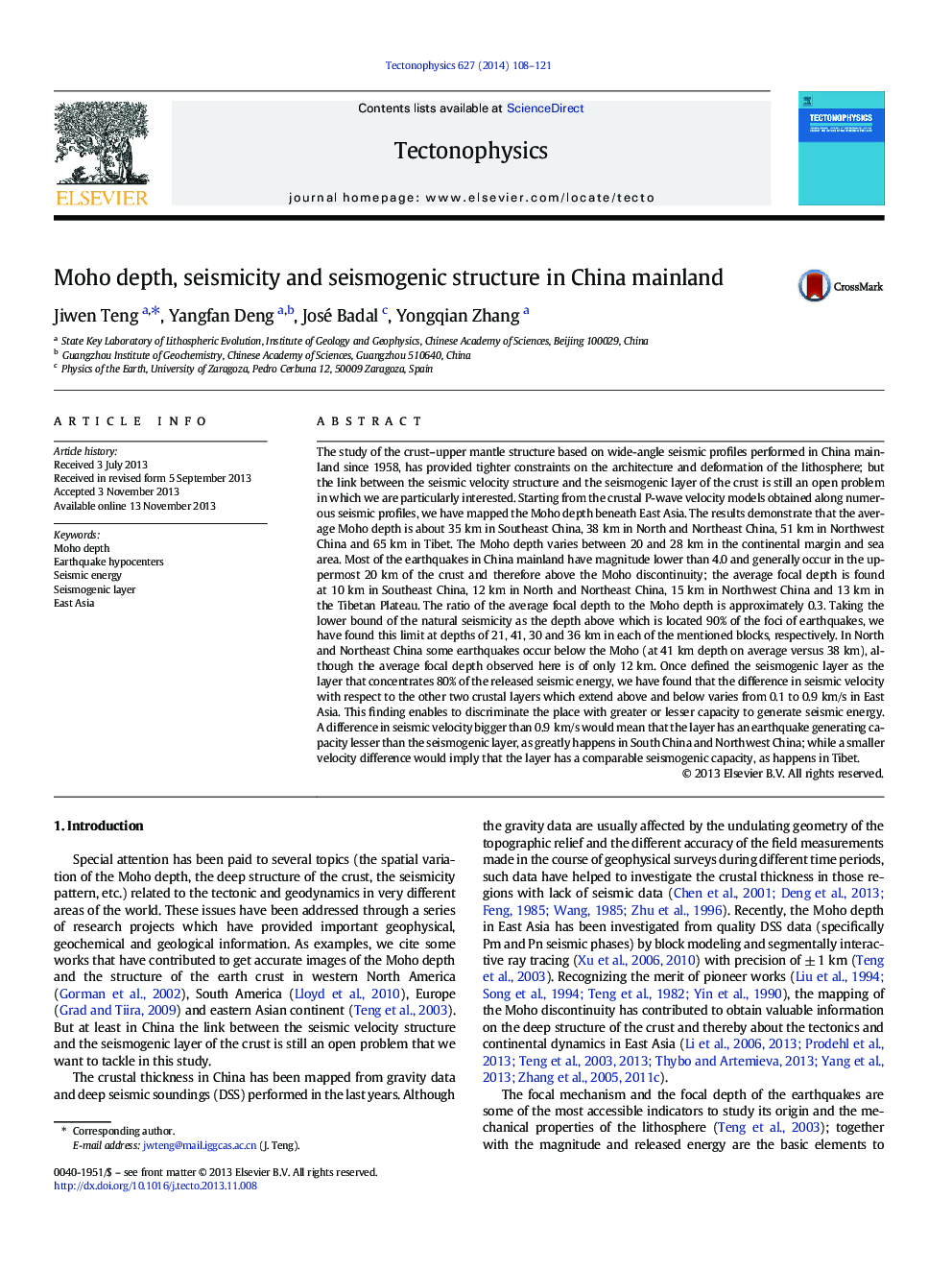| کد مقاله | کد نشریه | سال انتشار | مقاله انگلیسی | نسخه تمام متن |
|---|---|---|---|---|
| 4691967 | 1636764 | 2014 | 14 صفحه PDF | دانلود رایگان |
• We show the distribution of the Moho depth in East Asia.
• We make reference to the tectonic regimes in China.
• We analyze the features of the seismicity in China mainland.
• We study the seismogenic structure in different units of China.
The study of the crust–upper mantle structure based on wide-angle seismic profiles performed in China mainland since 1958, has provided tighter constraints on the architecture and deformation of the lithosphere; but the link between the seismic velocity structure and the seismogenic layer of the crust is still an open problem in which we are particularly interested. Starting from the crustal P-wave velocity models obtained along numerous seismic profiles, we have mapped the Moho depth beneath East Asia. The results demonstrate that the average Moho depth is about 35 km in Southeast China, 38 km in North and Northeast China, 51 km in Northwest China and 65 km in Tibet. The Moho depth varies between 20 and 28 km in the continental margin and sea area. Most of the earthquakes in China mainland have magnitude lower than 4.0 and generally occur in the uppermost 20 km of the crust and therefore above the Moho discontinuity; the average focal depth is found at 10 km in Southeast China, 12 km in North and Northeast China, 15 km in Northwest China and 13 km in the Tibetan Plateau. The ratio of the average focal depth to the Moho depth is approximately 0.3. Taking the lower bound of the natural seismicity as the depth above which is located 90% of the foci of earthquakes, we have found this limit at depths of 21, 41, 30 and 36 km in each of the mentioned blocks, respectively. In North and Northeast China some earthquakes occur below the Moho (at 41 km depth on average versus 38 km), although the average focal depth observed here is of only 12 km. Once defined the seismogenic layer as the layer that concentrates 80% of the released seismic energy, we have found that the difference in seismic velocity with respect to the other two crustal layers which extend above and below varies from 0.1 to 0.9 km/s in East Asia. This finding enables to discriminate the place with greater or lesser capacity to generate seismic energy. A difference in seismic velocity bigger than 0.9 km/s would mean that the layer has an earthquake generating capacity lesser than the seismogenic layer, as greatly happens in South China and Northwest China; while a smaller velocity difference would imply that the layer has a comparable seismogenic capacity, as happens in Tibet.
Figure optionsDownload as PowerPoint slide
Journal: Tectonophysics - Volume 627, 13 July 2014, Pages 108–121
